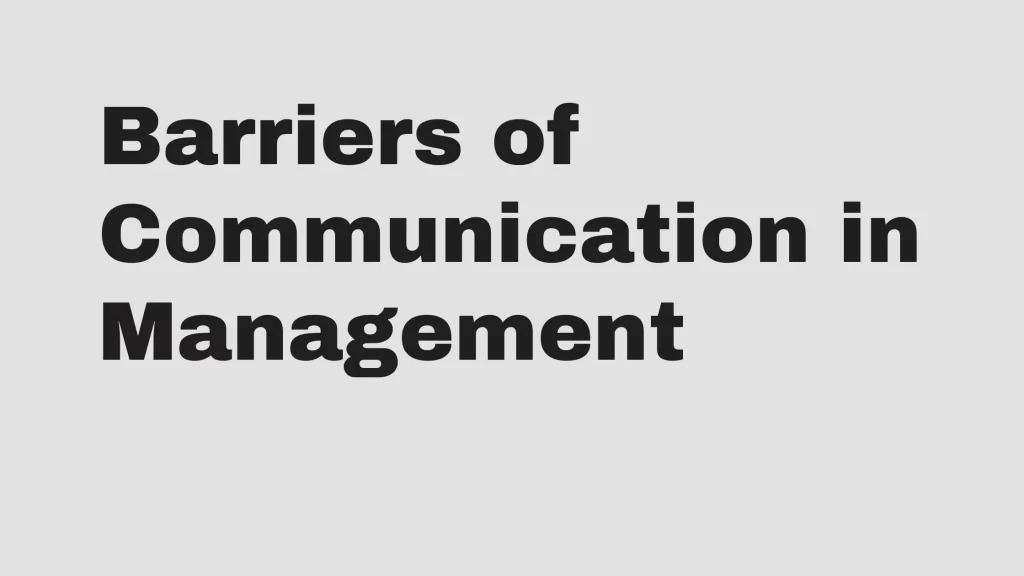In today’s global business environment, I’ve noticed a significant challenge that many of us face: cross-cultural communication barriers in the workplace. These barriers can lead to misunderstandings, reduced productivity, and even conflict among team members. It’s a complex issue that stems from our diverse backgrounds and the way we interpret information differently.
Cross-cultural communication in the workplace involves navigating language barriers, differing communication styles, and cultural norms to foster understanding and collaboration among diverse teams, ultimately enhancing productivity and harmony within the organization. Effective strategies include promoting cultural awareness, active listening, and adapting communication methods to accommodate diverse perspectives and backgrounds.
From my experience and research, I’ve found that issues like anxiety, uncertainty, stereotyping, and ethnocentrism play a big part in these communication challenges. They arise mainly due to inadequate cultural knowledge and a lack of intercultural communicative skills. Understanding and addressing these barriers is not just beneficial; it’s essential for fostering a harmonious and efficient workplace.
Contents
What is Cross-Cultural Communication in the Workplace?
In my years of navigating different work environments, I’ve come to realize that cross-cultural communication in the workplace transcends mere language barriers. It encompasses understanding and effectively interacting with colleagues who come from diverse cultural backgrounds. This includes respecting their traditions, values, and ways of expressing themselves.
At the heart of cross-cultural communication is the ability to foster an inclusive environment that cherishes diversity and leverages it for better team performance. Cultural diversity in the workplace introduces a rich array of perspectives that, when properly harnessed, can lead to innovative solutions and enhanced problem-solving capabilities.
However, achieving effective cross-cultural communication is not without its challenges. Misinterpretations and misunderstandings are common, often stemming from differing cultural norms around politeness, directness, or even non-verbal cues like eye contact and gestures. These nuances greatly impact how messages are conveyed and received, making it crucial for individuals to develop a keen sensitivity and adaptability to these differences.
One key strategy I’ve found effective is active listening. It involves truly hearing what a colleague is saying, understanding the context from their cultural perspective, and responding in a way that shows respect for their viewpoints. Similarly, educating oneself about the various cultural backgrounds within the team can preempt misunderstandings and foster a culture of respect and openness.
In my experience, workplaces that excel in cross-cultural communication often have comprehensive orientation programs for new hires, regular training sessions on cultural competency, and policies that encourage the celebration of cultural differences. Through these initiatives, employees feel valued and understood, thereby nurturing a positive and productive work atmosphere.
Embracing the complexity and richness of cross-cultural communication is not just a necessity but a valuable opportunity to enhance workplace harmony and efficiency. By investing time and effort into mastering these skills, businesses can thrive in today’s globalized world.
Cultural Differences in the Workplace
Navigating through the complex landscape of cultural differences in the workplace has always been a challenge for me. My journey has taught me that understanding and bridging these differences is not just beneficial but essential for fostering effective communication and collaboration among team members from diverse backgrounds.
Language and Communication Styles
In my experience, one of the most prominent barriers that manifest due to cultural differences is in Language and Communication Styles. It’s not just about the language itself but also the nuances involved in the communication styles of different cultures.
Where some cultures may prefer directness, others might find indirect communication more appropriate. This disparity often leads to misunderstandings and inefficiencies in conveying messages. Active listening, patience, and open-mindedness are tools I’ve found indispensable in overcoming these challenges.
Non-Verbal Communication
Non-Verbal Communication also plays a critical role in cross-cultural interactions. The interpretation of body language, gestures, eye contact, and even the way we dress can drastically vary from one culture to another.
I’ve observed situations where what is considered a positive gesture in one culture could be interpreted as disrespectful in another. Recognizing and adapting to these non-verbal cues is crucial for building trust and rapport among colleagues from diverse cultural backgrounds.
Attitudes and Beliefs
Differing Attitudes and Beliefs can significantly impact workplace dynamics. For instance, the attitude towards authority, time management, or work-life balance can vary widely across cultures.
These differences can affect everything from decision-making processes to the allocation of responsibilities. I’ve learned that respecting and valuing these diverse attitudes and beliefs not only enriches the workplace but also contributes to a more harmonious and productive environment.
Values and Norms
Values and Norms of a particular culture influence the behavior and expectations of its members. These can include work ethics, the importance of punctuality, or the value placed on teamwork versus individual achievement.
Understanding these values and norms has been key to my navigating through various cultural landscapes, enabling me to collaborate effectively with team members from around the globe.
Hierarchical Structures
The perception of Hierarchical Structures often varies significantly between cultures. In some cultures, hierarchy is strictly adhered to, with clear distinctions and respect for authority, whereas in others, a more egalitarian approach is preferred.
This difference can affect communication channels, problem-solving techniques, and the overall decision-making process. Recognizing and adapting to the preferred hierarchical structure has helped me in fostering a conducive work environment.
Personal Space and Touch
Lastly, conceptions of Personal Space and Touch are aspects that are easy to overlook but can lead to discomfort if not handled with sensitivity. The acceptable physical distance during interactions and the appropriateness of physical contact can differ markedly across cultures.
Being mindful of these differences has been crucial for me in ensuring comfortable and respectful interactions with colleagues from diverse backgrounds.
Understanding and adapting to these cultural differences has not only enhanced my professional relationships but has also significantly contributed to the success of cross-cultural collaborations.
Case Studies of Cross-Cultural Communication Barriers in the Workplace
In my exploration of cross-cultural communication barriers, I’ve come across numerous instances where differences in cultural backgrounds have led to significant challenges within the workplace. By examining specific case studies, it’s possible to gain a clearer understanding of the complexities involved and identify strategies for mitigation.
Communication Breakdown in Multinational Teams
One of the most stark illustrations of communication barriers occurred in a multinational team I worked with, consisting of members from over five different countries.
The primary issue stemmed from varying levels of English fluency, where native speakers unconsciously used colloquialisms and slang, leaving non-native speakers confused and often excluded from meaningful dialogues.
This situation not only created an unsettling social distance among team members but also led to crucial project details being misunderstood or overlooked. A notable incident involved a misinterpretation of the deadline for a project phase, causing significant delays and frustration.
Cultural Clashes in Decision-Making Processes
Another revealing case involved a U.S.-based company working closely with its Latin American counterpart to launch a new service. The approach to decision-making starkly contrasted between these two entities.
While the U.S. team was accustomed to a hierarchical, top-down decision-making process, their Latin American colleagues valued a more collective and consensus-driven approach.
This fundamental difference led to initial setbacks, where each party felt their contributions and perspectives were not being adequately considered or valued. It took several rounds of open discussions and adjustments to workflow processes before a mutual understanding was reached.
Miscommunication Leading to Conflict Resolution Issues
Conflict resolution also presents a significant challenge in cross-cultural settings. I recall an instance involving a European and an Asian team member who had a disagreement over the direction of a project. In line with their cultural norm, the European colleague was direct and confrontational in addressing the dispute, aiming for a quick resolution.
In contrast, the Asian colleague perceived this approach as aggressive and disrespectful, preferring a more indirect and harmonious path to resolving conflicts. This divergence in conflict resolution styles led to prolonged tension and required intervention from senior management to mediate the situation.
In each of these case studies, the underlying issue of cross-cultural communication barriers is evident. These scenarios underscore the importance of acknowledging and addressing cultural differences in the workplace to foster an environment of inclusivity, understanding, and effective collaboration.
How to overcome cross-cultural communication barriers in the workplace?
Cross-cultural communication barriers can feel like a significant hurdle in the workplace, yet overcoming them isn’t as daunting as it might appear. I’ve found that a few key strategies can make a substantial difference in fostering an environment where everyone feels understood and valued.
Firstly, it’s crucial to encourage and facilitate language and cultural training for all employees. Such programs can dramatically reduce misunderstandings and foster a sense of inclusivity.
By investing in regular workshops and courses, businesses can show their commitment to cultural competence, which, in my experience, enhances team cohesion and productivity.
Secondly, creating a clear communication protocol can mitigate the risks of misinterpretation. This means establishing which communication channels are preferred for different types of messages and ensuring that all team members are aware of these preferences.
For instance, some cultures may find direct feedback in emails too blunt, while others may appreciate the straightforwardness. Knowing and respecting these nuances can prevent potential conflicts.
Promoting a culture of feedback is another essential strategy. I’ve noticed that environments where feedback is encouraged and valued can quickly adapt to the diverse needs of its workforce.
Team members should feel comfortable sharing their perspectives on what’s working and what isn’t regarding cross-cultural communication. This approach enables continuous improvement and learning.
Diverse hiring practices also play a significant role. By actively seeking to hire employees from a wide range of cultural backgrounds, companies can naturally foster an environment of mutual respect and understanding. Diversity in the workplace isn’t just about ticking boxes; it’s about enriching the team’s collective perspective and problem-solving capabilities.
In implementing these strategies, it’s vital to remember that overcoming cross-cultural barriers is an ongoing process. It requires patience, understanding, and most importantly, a genuine willingness to learn from one another. The benefits, however, from improved team dynamics to increased creativity and innovation, are well worth the effort.
Conclusion
Tackling cross-cultural communication barriers isn’t just about smooth interactions; it’s about unlocking the full potential of a diverse workplace. By putting the strategies I’ve shared into practice, we can pave the way for a more inclusive, innovative, and dynamic work environment.
Remember, it’s the small steps taken consistently that lead to significant changes. So let’s embrace the journey of learning and growing together, fostering an atmosphere where every voice is heard and valued. After all, it’s through understanding and respecting our differences that we can truly come together to achieve greatness.
Boko Ducky has over 10 years of experience in helping individuals and organizations improve their communication skills.



